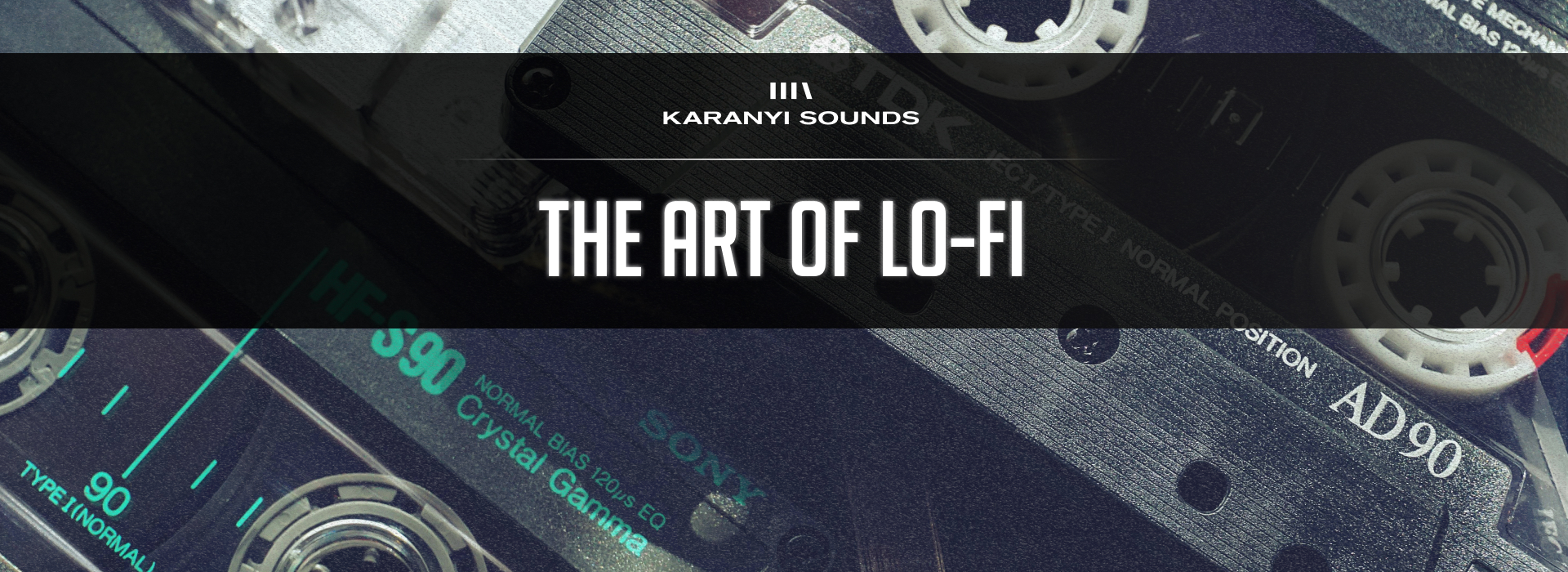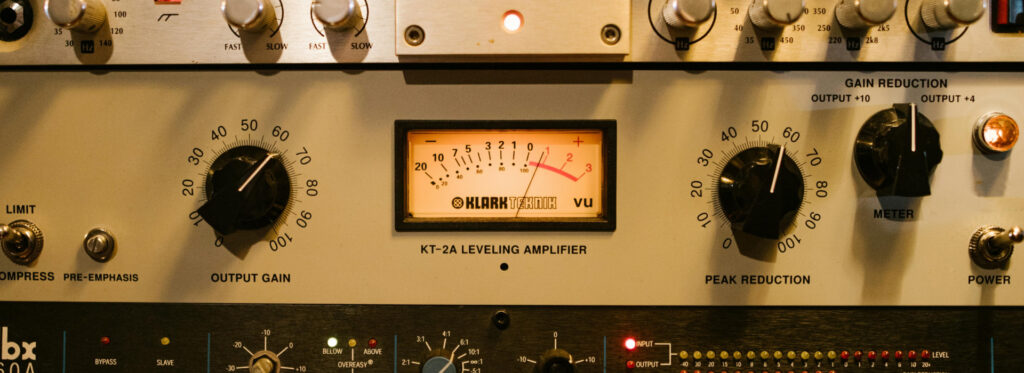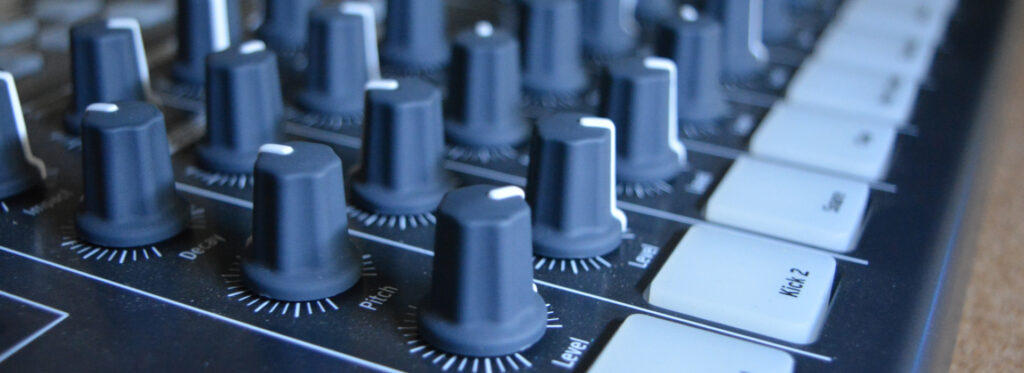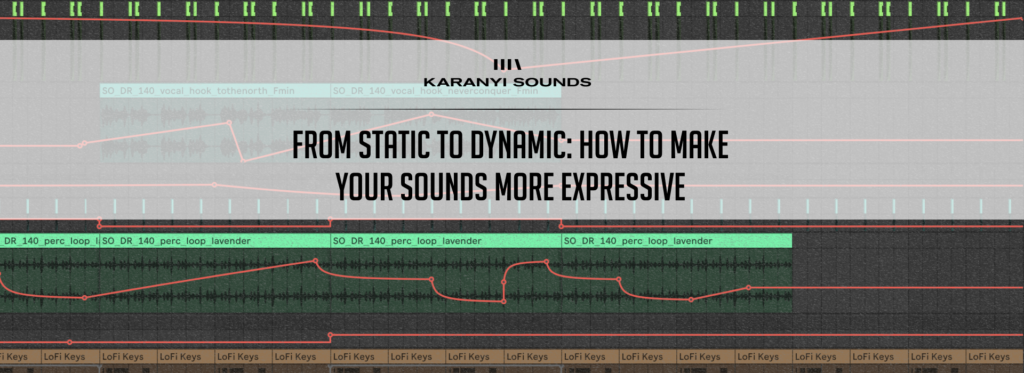
The Art of Lo-fi
April 7, 2025What Is Lo-Fi and Why Do We Love It?
Lo-fi (short for “low fidelity”) is more than just a sound; it’s a mindset. At its core, lo-fi embraces the imperfections that traditional audio engineering tries to eliminate. Crackles, tape hiss, detuned instruments, uneven timing – these aren’t flaws, they’re character. Lo-fi music values emotion over perfection, and that’s part of why it is loved by many.
Over the past decade, lo-fi has found a new audience: from study playlists and chillhop streams to ambient film scores and hazy indie pop tracks. But lo-fi isn’t just a genre, it’s an aesthetic rooted in minimalism, nostalgia, and honesty. It draws inspiration from other art forms that celebrate imperfection and rawness, like analog photography, handmade zines, DIY film, and even the Japanese philosophy of wabi-sabi – the appreciation of transient beauty and the perfectly imperfect.
In a world of over-polished pop and ultra-high-definition everything, lo-fi stands as a gentle rebellion. It says: art doesn’t have to be flawless to be meaningful.
How to Make Lo-Fi Music: Techniques and Creative Approaches
Whether you’re working in lo-fi hip-hop, ambient, indie, or experimental electronic, there are a few universal elements that help shape the lo-fi sound. But within those basics, there’s endless room for creativity.
1. Start with Imperfect, Characterful Instruments
Instead of reaching for a pristine digital piano, try sampling a cheap toy keyboard, or record a creaky old upright piano with your phone’s microphone. Don’t be afraid of background noise or pitch drift, these imperfections add charm. If you have access to a thrift store or flea market, pick up a used cassette deck or old synth and sample from it directly. Even broken or detuned instruments can become a lo-fi goldmine.
2. Use Noise as a Musical Element
Layering vinyl crackles, tape hiss, or environmental hum can anchor your track in a sense of place. You can go deeper by using envelope-followed noise, where the crackle or hiss swells and decays alongside your melodies. For example, sidechain a vinyl crackle to your keys or chords so that the noise “breathes” with the music. You can also resample and EQ field recordings like coffee shop ambience, city streets, or the inside of a subway car for texture.
3. Minimal Arrangements with Focused Emotion
Instead of building dense arrangements, focus on contrast and emotion. Try a track with just a single melodic instrument, drums, and ambient noise. Let silence and space do the heavy lifting. One powerful technique is to write your entire song around a single chord progression or sample, and just shift textures and dynamics subtly over time.
4. Preserve and Emphasize Dynamic Range
Don’t squash everything with compression. Let your soft parts remain soft and your loud moments breathe naturally. Record things at lower levels and resist the urge to normalize. This builds tension and gives the listener space to emotionally engage with the music. A soft melody followed by a sudden tape-saturated swell can feel cinematic.
5. Deliberate Timing Imperfections
Drag your drums slightly off-grid, or better yet, play them live with pads or a MIDI keyboard. Even quantized beats can feel alive if you add subtle swing or manual microtiming shifts. Lo-fi thrives on rhythm that feels rather than measures perfectly. When chopping up drum samples, try leaving some space before the first transients. This will also add imperfection to the timing.
The same goes for melodies: slightly detuned instruments or pitch drift can evoke a fragile, human quality. There are plenty of effect plugins that can do this, but built-in LFOs are your friends too.
6. Think Outside the DAW
Here are a few unusual and inspiring techniques:
- Re-amp your audio: Play a mix or stem through a small speaker (even your phone or a Bluetooth speaker), and record it back with a mic. This adds natural room coloration, reverb, and compression.
- Record to cassette or VHS and re-import into your DAW. This gives you authentic tape warble and saturation that’s hard to fake.
- Create rhythms from non-musical sources: Use the sound of a zipper, paper crinkling, or you drumming on the studio table with your fingers. (recorded via a contact mic or even a smartphone).
- Use vocal layers as texture: Hum, whisper, or speak lines into your phone and manipulate them with granular effects or heavy reverb, like Cloudmax 2. They don’t have to be intelligible, just emotional.
7. Field Recording & Emotional Context
Walk through your neighborhood, your favorite forest, or even your kitchen with a portable recorder. A morning breeze, water boiling, birds in the distance, these small moments can anchor a song emotionally. Layer them low in the mix to add realism, memory, and intimacy. They remind the listener that music isn’t made in a vacuum, but it’s a part of the real world.
Tools That Help: Using Instruments Designed for Lo-Fi
While there’s magic in creating everything from scratch, sometimes having an instrument built for lo-fi sound design can open up new creative paths (and save time). Instruments like Lofi Keys 2 are purposefully designed to capture the spirit of lo-fi with authentic samples of iconic instruments, built-in vinyl noises, tape-style modulation, neural-modeled amps, and dreamy reverb textures.
It offers a blend of vintage sample playback, analog-style synths, and a custom wavetable engine called MiniWave. All of which can be mixed and shaped like a 3-oscillator synth. With intuitive controls and character-rich presets, it’s a fast, inspiring way to get into the lo-fi zone, without sacrificing creative control.
Final Thoughts
The art of lo-fi is about finding beauty in the broken, the aged, the raw. It’s about feeling more than finesse. As a producer, it challenges you to listen differently: to prioritize mood, space, and intention over polish.
So embrace the imperfections. Chase the hiss. Leave in the mistakes. And make something that feels real.





